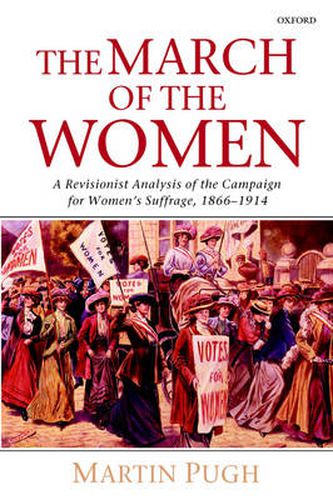Readings Newsletter
Become a Readings Member to make your shopping experience even easier.
Sign in or sign up for free!
You’re not far away from qualifying for FREE standard shipping within Australia
You’ve qualified for FREE standard shipping within Australia
The cart is loading…






This book is the first comprehensive study of the campaign for women’s suffrage to appear for over thirty years. It challenges the widely-held assumption that the Victorian suffragists underwent a decline during the 1890s, and sets out to prove that, on the contrary, they had effectively won the argument about votes for womenby 1900. To support this view the author demonstrates how ineffective Anti-Suffragisn was during this period; cites the impetus given to the campaign by the enfranchisement of women in New Zealand and Australia, in 1893 and 1902; and crucially examines the shift towards suffragist support by the Conservative party in the 1890s. The March of the Women also evaluates anew the militant campaign of the Edwardian era, contrasting the sharp divisions over tactics among the London leadership with the more pragmatic approach at grass roots level. It shows how the Pankhursts and the WSPU managed to combine attacking the British Establishment and its values with tapping into it for support and funds; while at the other end of the spectrum the non-militants gathered support for the cause from the working-class and the emergent Labour Party.
$9.00 standard shipping within Australia
FREE standard shipping within Australia for orders over $100.00
Express & International shipping calculated at checkout
This book is the first comprehensive study of the campaign for women’s suffrage to appear for over thirty years. It challenges the widely-held assumption that the Victorian suffragists underwent a decline during the 1890s, and sets out to prove that, on the contrary, they had effectively won the argument about votes for womenby 1900. To support this view the author demonstrates how ineffective Anti-Suffragisn was during this period; cites the impetus given to the campaign by the enfranchisement of women in New Zealand and Australia, in 1893 and 1902; and crucially examines the shift towards suffragist support by the Conservative party in the 1890s. The March of the Women also evaluates anew the militant campaign of the Edwardian era, contrasting the sharp divisions over tactics among the London leadership with the more pragmatic approach at grass roots level. It shows how the Pankhursts and the WSPU managed to combine attacking the British Establishment and its values with tapping into it for support and funds; while at the other end of the spectrum the non-militants gathered support for the cause from the working-class and the emergent Labour Party.